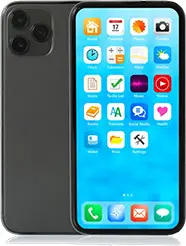We understand. Saving money is hard. Life is very expensive, and there never seems to be enough to cover your needs and still have some left over for the exciting stuff. But what if we told you there were some easy ways to cut back on your spending and actually start putting more money in the bank each month?
It may seem too good to be true, but with some simple changes here and there you could find yourself with an extra $50-$200 or more to sock away every month. The best part is, these won’t require huge overhauls or depriving yourself of all enjoyment. Just some common sense shifts in how you budget, spend, and save. If you’re ready to take back control of your cash flow and finally start building up your savings, read on. This blog post explores tips to help you budget and grow that ol wallet.
Track Your Spending to Identify Areas to Reduce
Step 1 when cutting back on spending is tracking where your money is actually going each month. Check your bank and credit card statements to categorize each transaction.
Look at how much you’re spending on essential spending categories rent or mortgage payments, groceries, insurance, and your other bills. Then, take a look at discretionary expenses such as dining out and hobbies.

Make a Budget and Stick to It
Once you’ve gotten an understanding of your finances, you’re going to need to start budgeting. To really get your spending under control, you need to create a budget and actually stick to it. Like so:
Make a list of your income and expenses
First — list all sources of income, then categorize your expenses into essentials like rent, food, and transportation, and credit card debt payments. Then, discretionary items like entertainment and hobbies. Be honest to include everything.
Decide on a reasonable amount you can allocate to flexible expenses. If you’ve been overspending, you’re likely going to need to cut back in stages. Try decreasing discretionary spending by 10-15% each month until you reach your target.
Look for expenses to reduce or eliminate
Check your statements line by line to find costs you can trim away like unused subscriptions or impulse purchases. Small changes can add up. Consider downgrading Wi-Fi speeds or driving less miles.
Using cash instead of cards
Once you have limits set, withdraw that amount in cash each month and pay for discretionary items with that. It’s psychologically harder to part with cash, so you’re likely going to be more mindful of what you’re buying.
Review your progress at least once a week. If you go over budget, find ways to compensate the next week. Stay committed—it can take 6-12 months of diligent budgeting to break old overspending habits. Though having control of your finances is worth the effort.
Look for Ways to Reduce Your Biggest Expenses
A good plan to reduce spending is to reduce your biggest bills first. Most people’s largest monthly expenses are housing, transportation, insurance, and food. Trim away in any of these areas.
Housing
If your rent or mortgage monthly payment is your biggest expense, consider downsizing to a smaller home or refinancing your mortgage to get lower interest payments. You could also take in a roommate to share the costs. Small things like turning off lights when leaving a room and using a programmable thermostat can add up to big savings on your utility bills over time.
Transportation
Do you really need that luxury vehicle? Trading in for a more affordable, fuel-efficient model can save you thousands a year in monthly payments on your car and gas. If public transit is an option where you live, take advantage of it. Walking, biking and carpooling whenever possible will also help reduce transportation costs.
Food
Another one of the easiest ways to spend money less on food is to eat at home more often instead of dining out. Cooking your own meals is so much more budget-friendly. Shop sales on staples like rice, beans, oats, and make food in large batches to freeze for later.

Find Free or Low-Cost Entertainment
Next — finding free or low-cost entertainment also helps control your spending habits. There’re many enjoyable activities that won’t cost your entire savings.
Explore Your Local Area
Go for a walk or bike ride and discover parts of your neighborhood you’ve never seen before. Check out community parks, recreation centers, museums, and landmarks in your city or town. Many places have free admission or “free days” each week. You might uncover some hidden gems right under your nose.
Hobbies
Do you have any hobbies or interests you’ve been wanting to start or get back into? Now is the perfect time. Things such as gardening, photography, board games, crafts, cooking, and thrifting (exploring your local thrift stores instead of regular or online shopping) are all low-cost hobbies you can enjoy. You can find many resources online or at your local library to get started. Engaging in an enjoyable hobby is a great way to spend free time without spending money.
Have a Movie Marathon
Host a movie night in with friends or have a solo movie marathon. Rent some DVDs from your library, stream movies you already subscribe to, or re-watch some old favorites you have on hand. Make some popcorn, get comfy on the couch, and escape into hours of free entertainment.
Check Out Local Events
Many communities have free festivals, concerts, workshops, and other events, especially in the summer. Check if your neighborhood or city has a community calendar to find events that interest you. Some options could be food festivals, art walks, book readings, yoga in the park, or outdoor movie screenings. Attending local happenings is an opportunity to experience new things and connect with others right in your town.
Build an Emergency Fund With the Money You Save
Once you do save money, what should you do with it? Well — an emergency fund is money thrown aside specifically for unexpected expenses like medical bills or significant car repairs.
Start small and automate
Don’t feel overwhelmed. Start by saving just $10 or $15 a week. Start automatic transfers from your checking to a separate savings account. Before you know it, you could have $500 or $1,000 aside. Once you get in the habit of automatically saving, increase the amount by $10 at a time.
Keep your emergency fund separate
Have a dedicated savings account just for your emergency fund. Don’t mix it in with your general savings. This will help ensure you only use it for real financial emergencies. Make it harder to access by not linking your emergency fund to your debit card. You’re going to have to make a manual transfer to use the money which gives you time to decide if the expense really qualifies as an emergency.
Go for $500 to start, then build up to 4-6 months of expenses
A starter emergency fund of $500 covers many minor unexpected expenses. Then, work your way up to saving 4 to 6 months of essential expenses like rent or your mortgage payment, utilities, groceries, and transportation. This could be several thousand dollars but gives you a nice financial cushion in case of job loss or other crisis.

Start Saving Money With EASY Wireless’ FREE Phone Plans!
Hopefully this blog post helps you find ways to save money. Though the best way to save money is EASY Wireless‘ free phones! That’s right, we’re offering some incredible benefits to eligible individuals.
Because of government connectivity programs such as Lifeline & ACP, we’re able to help Americans stay in touch with work and family, as well as to save on your current phone plan. Here’s what we’re offering:
EASY Wireless Unlimited Plan
- FREE Unlimited Data
- FREE Unlimited Talk
- FREE Unlimited Text
- FREE SIM Card Kit and Activation
- Choose to Keep Your Number or Get a New One
To start with EASY Wireless, apply online by clicking the below:
Start Saving Today!
Start Saving Today!
Or you can come to one of the EASY Wireless’s retail stores, where our customer service agent will help you apply for your benefits.


